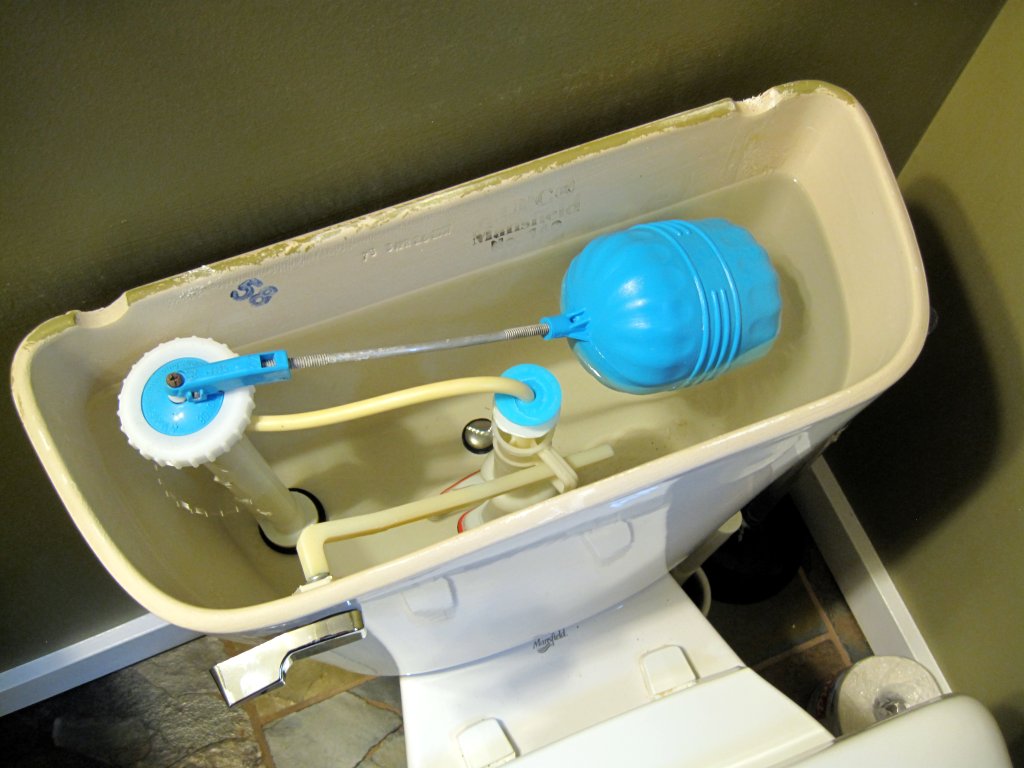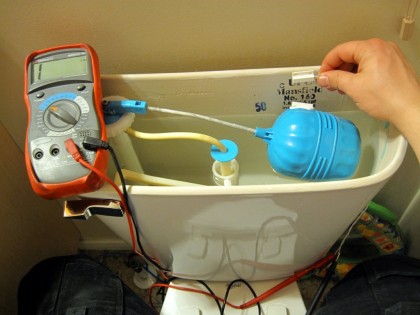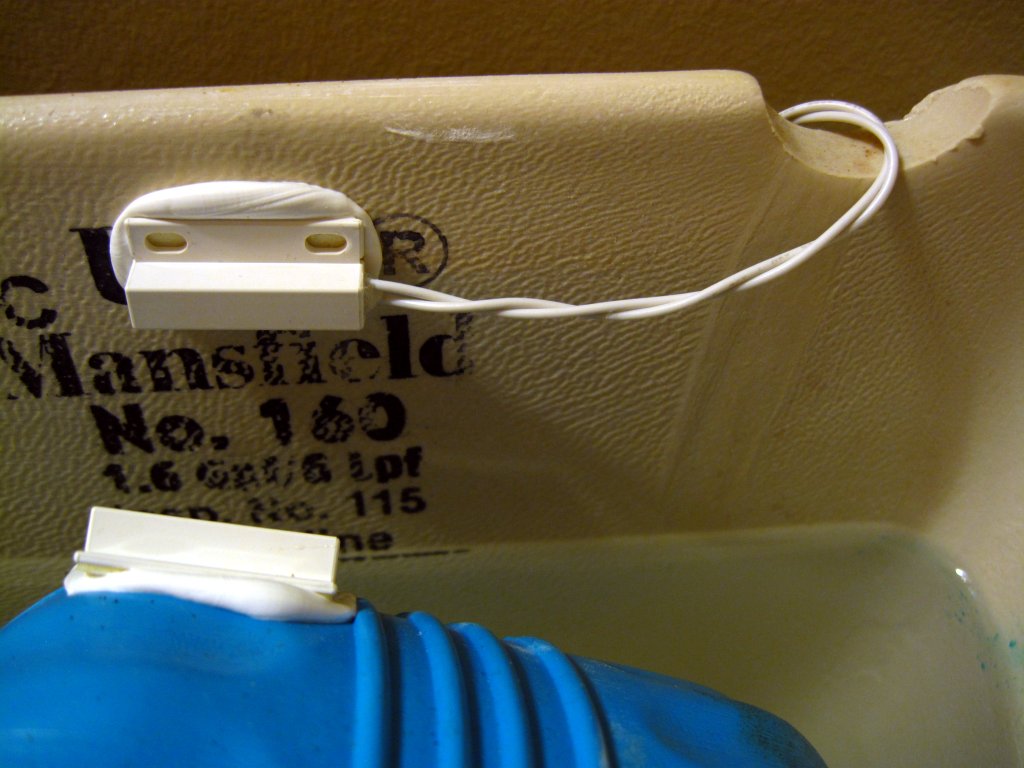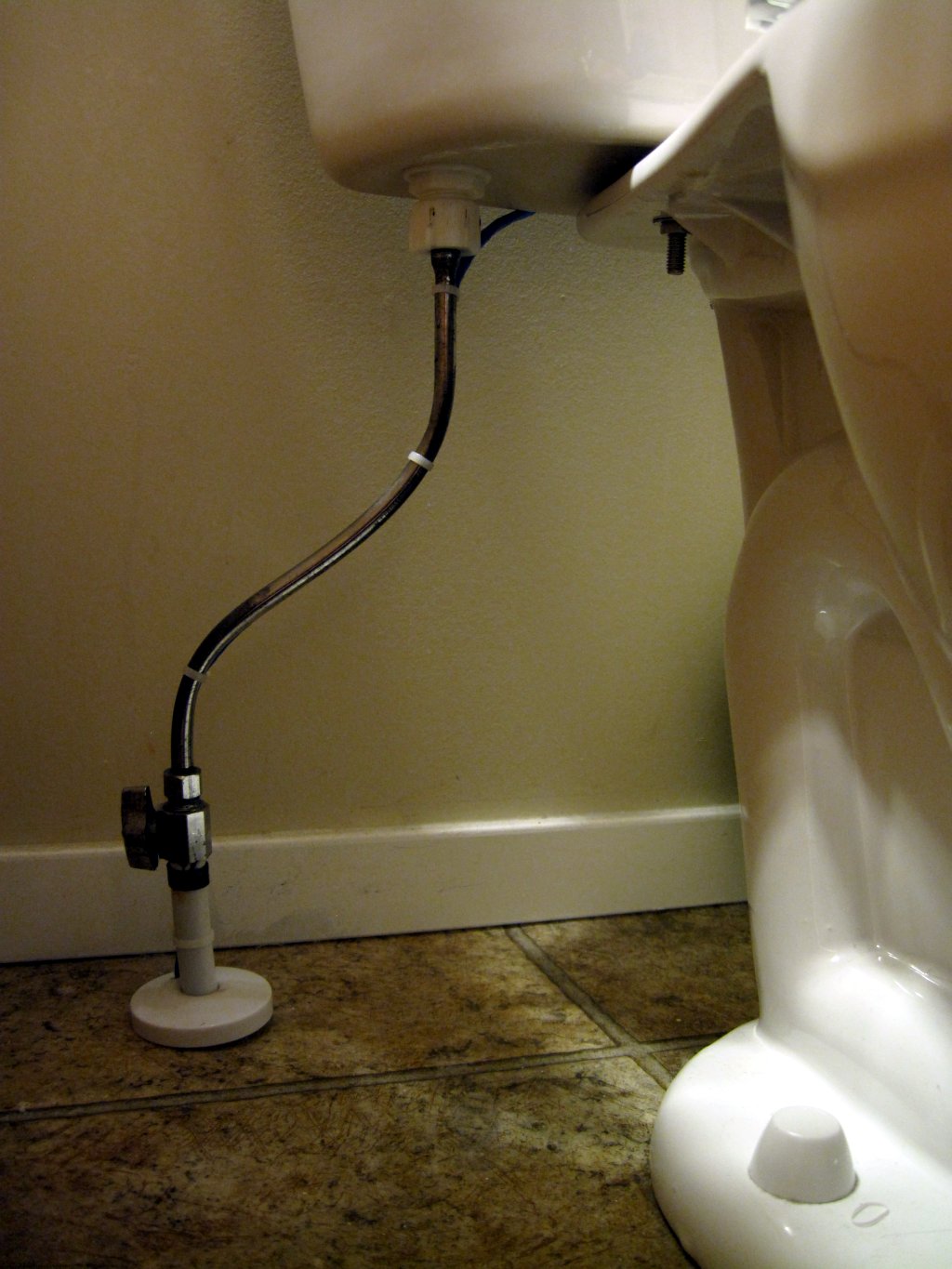Have you ever wondered how many times you (or your family members) flush the toilet in a day? Here is a simple way to find out.
Ironically enough, I got the idea for this project while sitting on the toilet. True, many an inspirational moment has transpired in like manner, but this one was particularly fitting. We have three toilets and 6 people in our house. Simple math says that’s two people per toilet. All of our toilets are the newer style six-litre-per-flush/clogs-every-other-time-you-use-it style, but the clogging issue is material for a whole other writeup / rant. A quick look inside the tank of one of these reveals two facts immediately:
- I have very clean water. Compared with many other toilet tanks I’ve taken the time to peer into, these are by far the cleanest ones I’ve ever seen. At aproximately 6 years old, there is no sign of scale or debris of any kind on the inside of the tank.
- There is more than 6 litres of water in there!
I pondered the question of just how many times per day each toilet was flushed. A recently failed ultrasonic humidifier left me with a cool little float switch, originally used to shut off the transducer if the water level in the resevoir dropped below a certain level, and I wondered if I might be able to mount such a switch inside the tank somehow to tell Venturii whenever the water level dropped, indicating a flush. But then, a simpler idea struck: Why not use a simple magnetic reed switch? I could mount the switch on the inside of the tank, and affix a magnet to the float ball close enough to the sensor that whenever the water level dropped, the magnet would fall with the ball float and return to rest once the tank was full. It was so simple it just might work.
I started by Dap’ing a magnet onto the float ball. The top of it was dry and I figured it would probably never actually go under water since in theory, that’s what a ball float does – it floats. Next was some testing to determine the best placement of both objects so that the sensor would give an accurate read of when the ball was up and when it had dropped. Putting my Digital Multimeter into the beeper mode of continuity testing helped in this process a lot as the meter would beep whenever the magnet was close enough to the switch to activate it. After some fanagaling, I secured both in place where they seemed to detect reliably.
Routing the wires out a convenient indent in the porcelain tank body allowed the lid to sit properly without causing any risk to the wires. I ran CAT5 cable to each toilet in the house in case future endeavors required PoE or Ethernet connectivity, and just used one of the pairs to connect the output of this switch to a digital input on my VDAC prototype board. Voila – Toilet Tank Status Monitoring in Venturii.
Last but not least, in order to appease the ever-important Aesthetics Committee, the CAT 5 cabling was routed down the water pipe supplying the tank with it’s water. A couple of tie-wraps held it in place, and even on this toilet whose supply line came out of the floor a considerable horizontal distance from the tank inlet, the wire is barely visible.
Our upstairs toilet was flushed seven times today.




